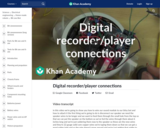
In this video we attach and wire a digital voice recorder to Bit-zee. Created by Karl Wendt.
- Subject:
- Applied Science
- Engineering
- Material Type:
- Lesson
- Provider:
- Khan Academy
- Provider Set:
- Khan Academy
- Author:
- Karl Wendt
- Date Added:
- 10/08/2012

In this video we attach and wire a digital voice recorder to Bit-zee. Created by Karl Wendt.
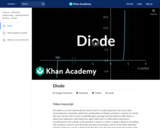
Introducing the diode as a circuit element. A diode conducts current in one direction but not the other. Created by Willy McAllister.
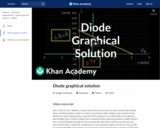
We solve a diode circuit graphically by plotting a diode i-v curve and resistor to find the intersection. Graphical solution methods are a common way to work with non-linear components like diodes. Created by Willy McAllister.
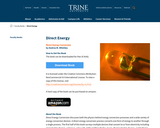
Direct Energy Conversion discusses both the physics behind energy conversion processes and a wide variety of energy conversion devices. A direct energy conversion process converts one form of energy to another through a single process. The first half of this book surveys multiple devices that convert to or from electricity including piezoelectric devices, antennas, solar cells, light emitting diodes, lasers, thermoelectric devices, and batteries. In these chapters, physical effects are discussed, terminology used by engineers in the discipline is introduced, and insights into material selection is studied. The second part of this book puts concepts of energy conversion in a more abstract framework. These chapters introduce the idea of calculus of variations and illuminate relationships between energy conversion processes.

Direct Energy Conversion discusses both the physics behind energy conversion processes and a wide variety of energy conversion devices. A direct energy conversion process converts one form of energy to another through
a single process. The first half of this book surveys multiple devices that convert to or from electricity including piezoelectric devices, antennas, solar cells, light emitting diodes, lasers, thermoelectric devices, and batteries.
In these chapters, physical effects are discussed, terminology used by engineers in the discipline is introduced, and insights into material selection is studied. The second part of this book puts concepts of energy conversion
in a more abstract framework. These chapters introduce the idea of calculus of variations and illuminate relationships between energy conversion processes.
This peer-reviewed book is used for a junior level electrical engineering class at Trine University. However, it is intended not just for electrical engineers. Direct energy conversion is a fascinating topic because it does not fit neatly into a single discipline. This book also should be of interest to physicists, chemists, mechanical engineers, and other researchers interestedin an introduction to the energy conversion devices studied by scientists and engineers in other disciplines
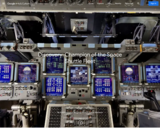
Flying more missions than any other shuttle, Discovery carried out every type of mission NASA had to offer, spending a total of 365 days in space, and checking off many firsts in spaceflight.
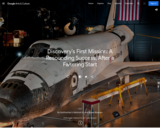
Over 30 years ago, Discovery ascended into space for the first time, after three thwarted launch attempts. Originally scheduled to lift off in June 1984, Discovery finally launched on August 30.

Esta es una lección virtual , para el diseño de un Acta de constitución de un proyecto

This experimental one-week course is a freshman-accessible hands-on introduction to Nuclear Science and Engineering at MIT. Students build and test their own Geiger Counter, and so doing, they explore different types and sources of radiation, how to detect them, how to shield them, how to accurately count / measure their activity, and explore cryptographical applications of radiation. This course is meant to be enjoyable and rigorous at the same time.
This course was offered during the Independent Activities Period (IAP), which is a special 4-week term at MIT that runs during January each year.
WARNING NOTICE:
An activity described in this course is potentially hazardous and requires a high level of safety training, special facilities and equipment, and supervision by appropriate individuals. You bear the sole responsibility, liability, and risk for the implementation of such safety procedures and measures. MIT shall have no responsibility, liability, or risk for the content or implementation of any of the material presented. Legal Notice
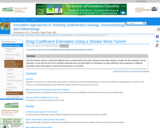
This lab exercise utilizes a small (and relatively easy to make) wind tunnel with a fog tracer that helps students visualize the flow dynamics around obstacles. In this exercise the use of cylinders perpendicular to the flow allows for estimations of drag coefficients and visualization of different Reynolds number flow patterns. Wind tunnel instructions are included.
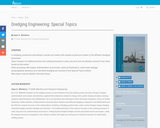
In dredging, production estimating is carried out mainly with analytical physical models of the different dredging processes.
Slurry transport of settling slurries and cutting processes in sand, clay and rock are already covered in two other books by the author.
Other processes like hopper sedimentation and erosion, water jet fluidization, cutter head spillage, pump/pipeline dynamics and clamshell dredging are covered in this Special Topics Edition.
New topics may be added in the near future.
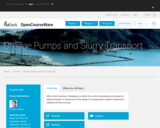
The purpose of this course is to convey knowledge of the various physical processes associated with slurry handling and transport during dredging. This knowledge is needed for the design of dredging equipment and for planning efficient equipment operations. The various processes are discussed and theories and simulation models that describe the processes are presented and compared during the course. The course can be broken down into four elements: 1. Pumps and engines a. Pump characteristics and cavitation b. Influence of particles on pump characteristics. 2. Hydraulic transport in pipelines a. Two-phase (solid-liquid) flow through pipelines b. Newtonian slurries c. Non Newtonian slurries d. Inclined and long pipelines. 3. Pump and pipeline systems a. Operation point and areas b. Production factors. 4. Case studies

This course deals with the design of drinking water treatment plants. We discuss theory and design exercises.

It is a multilingual Learning Management System developed with the aim to equip learners with knowledge, abilities and skills that allow them to enter the entrepreneurial world, via Industry 4.0 and Drone Technology, in order to yield the related opportunities. It includes a course, trainer guidelines, evaluation tools and e-learning platform.
The course includes 12 chapters on topics relevant to Industry 4.0 and Drone Technology and it's available in 5 languages (EN, RO, PL, GR, IT), free and easily accessible.
eduDrone LMS link: https://edudrone-project.eu/lms/
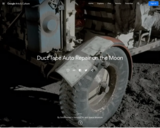
When most people think of emergency fixes in space, the first incident that comes to mind is the famous Apollo 13 mission.
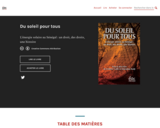
L’énergie solaire au Sénégal : un droit, des droits, une histoire
Long Description:
L’énergie solaire est une promesse de développement et de prospérité pour l’Afrique. Elle a été annoncée et expérimentée sur le continent dans un esprit de science ouverte et de « communs » technologiques et énergétiques il y a déjà près de soixante ans. Séchoirs et chauffe-eaux, pompes solaires et centrales électriques thermodynamiques : des pionniers ont développé et installé, dès la fin des années 1950, des techniques et des matériels en Afrique de l’Ouest et en particulier au Sénégal.
Le présent ouvrage, issu de deux journées d’études organisées à Dakar en mai 2016, rend compte pour la première fois, de manière particulièrement symbolique, de cette histoire et du futur de l’énergie solaire en Afrique. Il rassemble, dans une première partie, des témoignages d’acteurs et une mise en perspective sociohistorique large des politiques de l’énergie solaire en Afrique de l’Ouest sur un demi-siècle. Ce regard est complété par la réédition d’un texte de référence du professeur Abdou Moumouni Dioffo, pionnier nigérien de l’énergie solaire dès 1964.
Dans une seconde partie, cet ouvrage interroge également les prolongements actuels de l’énergie solaire en France et au Sénégal, en particulier son encadrement juridique et réglementaire. L’énergie solaire peut-elle ou doit-elle être considérée comme un « commun » ou un droit humain fondamental? Quels sont aujourd’hui les droits associés à l’énergie solaire au Sénégal? Quels enseignements tirer d’une comparaison avec le corpus juridique en la matière tel qu’il existe en France?
Associant juristes français et sénégalais, et spécialistes de la sociologie et des politiques de l’énergie, cet ouvrage se veut au final une invitation et un outil pour poursuivre les recherches sur l’histoire et le droit de l’énergie solaire en Afrique.
(Compléments vidéos, entretiens et témoignages sur le blog de recherche : https://afrisol.hypotheses.org)
Word Count: 96883
ISBN: 978-2-924661-34-5
(Note: This resource's metadata has been created automatically by reformatting and/or combining the information that the author initially provided as part of a bulk import process.)

This course covers the fundamentals of Newtonian mechanics, including kinematics, motion relative to accelerated reference frames, work and energy, impulse and momentum, 2D and 3D rigid body dynamics. The course pays special attention to applications in aerospace engineering including introductory topics in orbital mechanics, flight dynamics, inertial navigation and attitude dynamics. By the end of the semester, students should be able to construct idealized (particle and rigid body) dynamical models and predict model response to applied forces using Newtonian mechanics.

Rigid Body Dynamics.
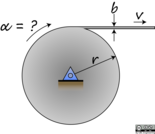
Dynamics problems for the WeBWorK open online homework system. Includes problems from rigid body dynamics, at the second-year level.
The "tested" problems have been deployed in a class. The "untested" problems have been tested by the creators, but not yet deployed in a class.
These problems need to be uploaded into an instance of WeBWorK to use/assign them.

Introduction to the dynamics and vibrations of lumped-parameter models of mechanical systems. Kinematics. Force-momentum formulation for systems of particles and rigid bodies in planar motion. Work-energy concepts. Virtual displacements and virtual work. Lagrange's equations for systems of particles and rigid bodies in planar motion. Linearization of equations of motion. Linear stability analysis of mechanical systems. Free and forced vibration of linear multi-degree of freedom models of mechanical systems; matrix eigenvalue problems. Introduction to numerical methods and MATLAB® to solve dynamics and vibrations problems.

This class is an introduction to the dynamics and vibrations of lumped-parameter models of mechanical systems. Topics include kinematics; force-momentum formulation for systems of particles and rigid bodies in planar motion; work-energy concepts; virtual displacements and virtual work; Lagrange's equations for systems of particles and rigid bodies in planar motion; linearization of equations of motion; linear stability analysis of mechanical systems; free and forced vibration of linear multi-degree of freedom models of mechanical systems; and matrix eigenvalue problems. The class includes an introduction to numerical methods and using MATLAB® to solve dynamics and vibrations problems.
This version of the class stresses kinematics and builds around a strict but powerful approach to kinematic formulation which is different from the approach presented in Spring 2007. Our notation was adapted from that of Professor Kane of Stanford University.

Upon successful completion of this course, students will be able to:
Create lumped parameter models (expressed as ODEs) of simple dynamic systems in the electrical and mechanical energy domains
Make quantitative estimates of model parameters from experimental measurements
Obtain the time-domain response of linear systems to initial conditions and/or common forcing functions (specifically; impulse, step and ramp input) by both analytical and computational methods
Obtain the frequency-domain response of linear systems to sinusoidal inputs
Compensate the transient response of dynamic systems using feedback techniques
Design, implement and test an active control system to achieve a desired performance measure
Mastery of these topics will be assessed via homework, quizzes/exams, and lab assignments.

Introduction to dynamics and vibration of lumped-parameter models of mechanical systems. Three-dimensional particle kinematics. Force-momentum formulation for systems of particles and for rigid bodies (direct method). Newton-Euler equations. Work-energy (variational) formulation for systems particles and for rigid bodies (indirect method). Virtual displacements and work. Lagrange's equations for systems of particles and for rigid bodies. Linearization of equations of motion. Linear stability analysis of mechanical systems. Free and forced vibration of linear damped lumped parameter multi-degree of freedom models of mechanical systems. Application to the design of ocean and civil engineering structures such as tension leg platforms.
This subject was originally offered in Course 13 (Department of Ocean Engineering) as 13.013J. In 2005, ocean engineering became part of Course 2 (Department of Mechanical Engineering), and this subject merged with 2.003.
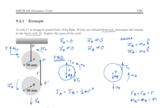
These dynamics course notes were authored by Dr. Elizabeth Croft (currently at Monash University (elizabeth.croft@monash.edu) in 2004, and converted for open licensing (including figure creation) in 2019 by Dr. Agnes d'Entremont (adentremont@mech.ubc.ca) from the Department of Mechanical Engineering at the University of British Columbia, Vancouver, Canada (https://mech.ubc.ca).
The notes (are designed to be used for a second-year dynamics course in Mechanical Engineering, and cover planar rigid-body dynamics and an introduction to one degree-of-freedom vibrations. The order of topics has vibrations earlier in the series than typical, due to their use in an integrated course. This order matches the course timing of related ordinary differential equation solutions in the integrated mathematics and electric circuits courses.
These notes are intended to be skeleton notes, with substantial portions (diagrams, derivations, solutions) written in by students along with their instructor. Completed notes are included. PDF notes plus original LaTeX code and editable images (Powerpoint) are available at the link.
This work is licensed under a Creative Commons Attribution-ShareAlike 4.0 International License.
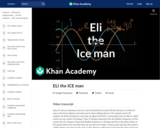
Remember the relationship between current and voltage in an inductor and capacitor with the help of ELI the ICE man. Created by Willy McAllister.
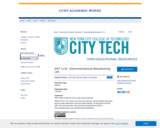
This is a lab manual for an Electromechanical Manufacturing course.

Topic : Rectilinear Motion

Instructional materials for the course "ENGR 1110: Engineering Graphics" include videos, assignments, slides, and drawings on the following topics: engineering graphics and scales, orthographic views, isometric views, dimensioning, section views, AutoCAD, layers, colors, mirrors, fillet, arrays, chamfer, blocks, Fusion 360, sheet metal modeling, tracing, textures, lofting and more.

Instructional materials for the course "ENTC 2160: Architectural CAD" include videos demonstrating how to create CAD drawings and use CAD tools. Videos cover the following topics: exterior walls, interior walls, doors, windows, dimensioning, linetypes, electrical, slab, stairs, hatching, fireplaces, and roofing.

Instructional materials for the course "ENTC 2170: Computer Aided Design and Drafting" include videos, assignments, slides, and drawings on the following topics: engineering graphics and scales, orthographic views, isometric views, dimensioning, section views, AutoCAD, layers, colors, mirrors, fillet, arrays, chamfer, blocks, Fusion 360, sheet metal modeling, tracing, textures, lofting and more.
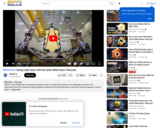
Dr. Thomas Zurbuchen and Dr. Ellen Stofan discuss the James Webb Space Telescope upcoming launch, as well as the Hubble Space Telescope backup mirror and historical spectrographs.

This course provides a review of physical, chemical, ecological, and economic principles used to examine interactions between humans and the natural environment. Mass balance concepts are applied to ecology, chemical kinetics, hydrology, and transportation; energy balance concepts are applied to building design, ecology, and climate change; and economic and life cycle concepts are applied to resource evaluation and engineering design. Numerical models are used to integrate concepts and to assess environmental impacts of human activities. Problem sets involve development of MATLAB® models for particular engineering applications. Some experience with computer programming is helpful but not essential.
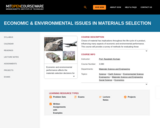
Choice of material has implications throughout the life-cycle of a product, influencing many aspects of economic and environmental performance. This course will provide a survey of methods for evaluating those implications. Lectures will cover topics in material choice concepts, fundamentals of engineering economics, manufacturing economics modeling methods, and life-cycle environmental evaluation.
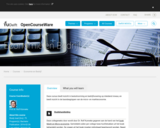
Deze cursus biedt inzicht in besluitvorming en bedrijfsvoering op inleidend niveau; en biedt inzicht in de basisbegrippen van de micro- en markteconomie; Na het volgen van deze module kunt u: 1)basisbegrippen en theorieĚÇn van de micro- en markteconomie toelichten; 2)belangrijke concepten en theorieĚÇn toepassen op eenvoudige situaties; 3)elementen uit de discipline herkennen in concrete voorbeelden van besluitvorming en management
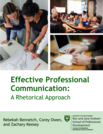
Word Count: 108374
(Note: This resource's metadata has been created automatically by reformatting and/or combining the information that the author initially provided as part of a bulk import process.)

This course is a fast-paced introduction to the C and C++ programming languages, with an emphasis on good programming practices and how to be an effective programmer in these languages. Topics include object-oriented programming, memory management, advantages of C and C++, optimization, and others. Students are given weekly coding assignments and a final project to hone their skills. Recommended for programmers with some background and experience in other languages.
This course is offered during the Independent Activities Period (IAP), which is a special 4-week term at MIT that runs from the first week of January until the end of the month.
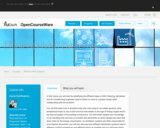
In this course you will start by identifying the different steps a HVAC (Heating, Ventilation and Air Conditioning) engineers need to follow to come to a proper design while collaborating with the architect.
You will then learn how to distribute heat and cold using air and water systems, what temperature levels to use in both and how that relates to the type of energy supply and to the thermal quality of the building construction. You will further deepen your knowledge on air handling units and how to humidify and dehumidify air when needed and what that does mean for the energy consumption. As ventilation systems are often responsible for local thermal discomfort, you will also discover how different distribution systems lead to different comfort experiences and different indoor air qualities and you will know which simple control techniques can be applied.
Finally you will study a modern complex system consisting of an aquifer thermal storage, heat pump, boiler, solar collector, PV-cells, air handling unit, water and air distribution systems. This will allow you to develop skills to catch the complexity of such HVAC systems and to understand the basic rules of how to control them to get the best out of them and how to use data from the Building Energy Management System to help you in this task.
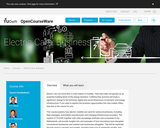
Electric cars are more than a novel means of mobility. They have been recognized as an essential building block of the energy transition. Fulfilling their promise will imply a significant change in the technical, digital and social dimensions of transport and energy infrastructure. If you want to explore the business opportunities this new market offers, then this is the course for you!
This course explains how electric mobility can work for various businesses, including fleet managers, automobile manufacturers and charging infrastructure providers. The experts of TU Delft, together with other knowledge institutes and companies in the Netherlands, will provide insights into and examples of how innovations have disrupted conventional businesses and created new businesses altogether. This will be explained through various concepts and models, including total cost of ownership models, lean mass production, value chain thinking and business integration.
After completing this course, you will be able to create e-mobility business models and develop a new strategy for your company which includes transition to or incorporation of e-mobility.
The course includes video lectures, presentations and exercises, which are all illustrated with real-world case studies from projects that were implemented in the Netherlands.
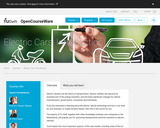
Electric vehicles are the future of transportation. Electric mobility has become an essential part of the energy transition, and will imply significant changes for vehicle manufacturers, governments, companies and individuals.
If you are interested in learning about the electric vehicle technology and how it can work for your business or create societal impact, then this is the course for you.
The experts of TU Delft, together with other knowledge institutes and companies in the Netherlands, will prepare you for upcoming developments amid the transition to electric vehicles.
You’ll explore the most important aspects of this new market, including state-of-the-art technology of electric vehicles and charging infrastructure; profitable business models for electric mobility; and effective policies for governmental bodies, which will accelerate the uptake of electric mobility.
The course includes video lectures, presentations and exercises, which are all reinforced with real-world case studies from projects that were implemented in the Netherlands.

Electric cars are more than a novel means of mobility. They have been recognized as an essential building block of the energy transition. Fulfilling their promise will imply a significant change in the technical, digital and social dimensions of transport and energy infrastructure. As the massive adoption of electric mobility will deeply change our society and our individual routines, government intervention is called for. If you are interested in learning about the roles of government in shaping the transition towards electric mobility and renewable energy systems, then this is the course for you.
In this course, you will explore the promise of electric mobility from different public policy perspectives and different levels of government, and learn how they interact. After completing this course, you will be able to assess a policy plan to support the introduction of electric cars and make a motivated choice between alternative policy instruments. In the final week, the course will be concluded by connecting the different track perspectives.
The course includes video lectures, presentations and exercises, which are all illustrated with real-world case studies from projects that were implemented in the Netherlands.
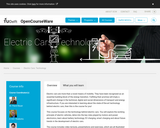
Electric cars are more than a novel means of mobility. They have been recognized as an essential building block of the energy transition. Fulfilling their promise will imply a significant change in the technical, digital and social dimensions of transport and energy infrastructure. If you are interested in learning about the state-of-the-art technology behind electric cars, then this is the course for you!
This course focuses on the technology behind electric cars. You will explore the working principle of electric vehicles, delve into the key roles played by motors and power electronics, learn about battery technology, EV charging, smart charging and about future trends in the development of electric cars.
The course includes video lectures, presentations and exercises, which are all illustrated with real-world case studies from projects that were implemented in the Netherlands.
This course was co-developed by Dutch Innovation Centre for Electric Road Transport (Dutch-INCERT) and TU Delft and is taught by experts from both the industry and academia, who share their knowledge and insights.
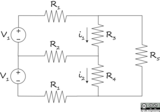
Electric Circuit Analysis problems for the WeBWorK open online homework system. Includes problems from second-year level (both Circuits I and II), as well as review problems from first-year.
The "tested" problems have been deployed in a class. The "untested" problems have been tested by the creators, but not yet deployed in a class.
These problems need to be uploaded into an instance of WeBWorK to use/assign them.

This course explores the relationships which exist between the performance of electrical, optical, and magnetic devices and the microstructural characteristics of the materials from which they are constructed. The class uses a device-motivated approach which emphasizes emerging technologies. Device applications of physical phenomena are considered, including electrical conductivity and doping, transistors, photodetectors and photovoltaics, luminescence, light emitting diodes, lasers, optical phenomena, photonics, ferromagnetism, and magnetoresistance.

This course is a three-part series which explains the basis of the electrical, optical, and magnetic properties of materials including semiconductors, metals, organics, and insulators. We will show how devices are built to take advantage of these properties. This is illustrated with a wide range of devices, placing a strong emphasis on new and emerging technologies.
The first part of the course covers electronic materials and devices, including diodes, bipolar junction transistors, MOSFETs, and semiconductor properties. The second part covers optical materials and devices, including photodetectors, solar cells (photovoltaics), displays, light emitting diodes, lasers, optical fibers, optical communications, and photonic devices. The final part of the series covers magnetic materials and devices, including magnetic data storage, motors, transformers, and spintronics.
This course was organized as a three-part series on MITx by MIT’s Department of Materials Science and Engineering and is now archived on the Open Learning Library, which is free to use. You have the option to sign up and enroll in each modules if you want to track your progress, or you can view and use all the materials without enrolling.

After this course the student can:
Understand mechanical system requirements for Electric Drive
Understand and apply passive network elements (R, L, C), laws of Kirchhof, Lorentz, Faraday
Understand and apply: phasors for simple R,L,C circuits
Understand and apply real and reactive power, rms, active and reactive current, cos phi
Describe direct current (DC), (single phase) alternating current (AC) and (three phase) alternating current systems, star-delta connection
Understand the principle of switch mode power electronic converters, pole as a two quadrant and four quadrant converter
Understand principles of magnetic circuits, inductances and transformers
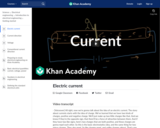
Current is the flow of charge. We measure current by counting the amount of charge passing through a boundary in one second. Created by Willy McAllister.
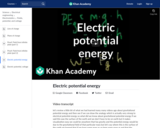
Introduction to electric potential energy. Created by Sal Khan.

Electrochemical engineering deals with electrochemical devices like electrolysers, fuel cells, and batteries. While several excellent books exist in this long-standing and still growing field, their focus is usually on chemistry or phenomenology. In this textbook, we focus on mathematical modelling of the physical phenomena involved. Instead of resorting to numerical modelling, the aim is to derive simplified analytical models that maximise understanding.
Porous electrodes, ion mass transport, and multiphase flow are central themes in this book. Examples include modelling the water saturation in a fuel cell diffusion layer, the gas fraction and current distribution in an alkaline water electrolyser, the potential distribution in a binary electrolyte inside porous battery electrode, and the concentration distribution in the flow channel of a redox flow battery. This makes for a diverse, challenging, and stimulating journey, for both students and researchers.

This course discusses applications of electromagnetic and equivalent quantum mechanical principles to classical and modern devices. It covers energy conversion and power flow in both macroscopic and quantum-scale electrical and electromechanical systems, including electric motors and generators, electric circuit elements, quantum tunneling structures and instruments. It studies photons as waves and particles and their interaction with matter in optoelectronic devices, including solar cells, displays, and lasers.
The instructors would like to thank Scott Bradley, David Friend, Ta-Ming Shih, and Yasuhiro Shirasaki for helping to develop the course, and Kyle Hounsell, Ethan Koether, and Dmitri Megretski for their work preparing the lecture notes for OCW publication.

This text is an introductory treatment on the junior level for a two-semester electrical engineering course starting from the Coulomb-Lorentz force law on a point charge. The theory is extended by the continuous superposition of solutions from previously developed simpler problems leading to the general integral and differential field laws. Often the same problem is solved by different methods so that the advantages and limitations of each approach becomes clear. Sample problems and their solutions are presented for each new concept with great emphasis placed on classical models of physical phenomena such as polarization, conduction, and magnetization. A large variety of related problems that reinforce the text material are included at the end of each chapter for exercise and homework.

Published in 1989 by Prentice-Hall, this book is a useful resource for educators and self-learners alike. The text is aimed at those who have seen Maxwell's equations in integral and differential form and who have been exposed to some integral theorems and differential operators. A hypertext version of this textbook can be found here. An accompanying set of video demonstrations is available below.
These video demonstrations convey electromagnetism concepts. The demonstrations are related to topics covered in the textbook. They were prepared by Markus Zahn, James R. Melcher, and Manuel L. Silva and were produced by the Department of Electrical Engineering and Computer Science at the Massachusetts Institute of Technology.
The purpose of these demonstrations is to make mathematical analysis of electromagnetism take on physical meaning. Based on relatively simple configurations and arrangements of equipment, they make a direct connection between what has been analytically derived and what is observed. They permit the student to observe physically what has been described symbolically. Often presented with a plot of theoretical predictions that are compared to measured data, these demonstrations give the opportunity to test the range of validity of the theory and present a quantitative approach to dealing with the physical world.
The short form of these videos contains the demonstrations only. The long form also presents theory, diagrams, and calculations in support of the demonstrations.
These videos are used in the courses 6.013/ESD.013J and 6.641.
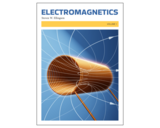
I have revamped the book Electromagnetics 1 by Steven Ellingson as a part of idoer project. Changes I made in this version of the book include:
• Cover design
• Typesetting
• Visual improvement of figures
• Addition of problems.
If you notice any errors please check the original source which is available at:
https://vtechworks.lib.vt.edu/handle/10919/84164
Image source:
https://drive.google.com/drive/folders/1k2zHmuuHwUTnM5ea5ifaqcvkU5XJ_9eT
If you have any questions about this version of the work please message me directly or contact me at watershiptepesi@gmail.com.
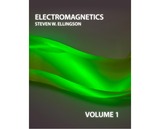
Electromagnetics Volume 1 by Steven W. Ellingson is a 225-page, peer-reviewed open educational resource intended for electrical engineering students in the third year of a bachelor of science degree program. It is intended as a primary textbook for a one-semester first course in undergraduate engineering electromagnetics. The book employs the “transmission lines first” approach in which transmission lines are introduced using a lumped-element equivalent circuit model for a differential length of transmission line, leading to one-dimensional wage equations for voltage and current.
Suggested citation: Ellingson, Steven W. (2018) Electromagnetics, Vol. 1. Blacksburg, VA: VT Publishing. https://doi.org/10.21061/electromagnetics-vol-1 CC BY-SA 4.0
Three formats of this book are available:
Print (ISBN 978-0-9979201-8-5)
PDF (ISBN 978-0-9979201-9-2)
LaTeX source files
If you are a professor reviewing, adopting, or adapting this textbook please help us understand a little more about your use by filling out this form: http://bit.ly/vtpublishing-updates
Additional Resources
Problem sets and the corresponding solution manual are also available.
Community portal for the Electromagnetics series https://www.oercommons.org/groups/electromagnetics-user-group/3455/
Faculty listserv for the Electromagnetics series https://groups.google.com/a/vt.edu/d/forum/electromagnetics-g
Submit feedback and suggestions http://bit.ly/electromagnetics-suggestion
Table of Contents:
Chapter 1: Preliminary Concepts
Chapter 2: Electric and Magnetic Fields
Chapter 3: Transmission Lines
Chapter 4: Vector Analysis
Chapter 5: Electrostatics
Chapter 6: Steady Current and Conductivity
Chapter 7: Magnetostatics
Chapter 8: Time-Varying Fields
Chapter 9: Plane Waves in Lossless Media
Appendixes
A. Constitutive Parameters of Some Common Materials
B. Mathematical Formulas
C. Physical Constants
About the Author: Steven W. Ellingson (ellingson@vt.edu) is an Associate Professor at Virginia Tech in Blacksburg, Virginia in the United States. He received PhD and MS degrees in Electrical Engineering from the Ohio State University and a BS in Electrical & Computer Engineering from Clarkson University. He was employed by the US Army, Booz-Allen & Hamilton, Raytheon, and the Ohio State University ElectroScience Laboratory before joining the faculty of Virginia Tech, where he teaches courses in electromagnetics, radio frequency systems, wireless communications, and signal processing. His research includes topics in wireless communications, radio science, and radio frequency instrumentation. Professor Ellingson serves as a consultant to industry and government and is the author of Radio Systems Engineering (Cambridge University Press, 2016).
This textbook is part of the Open Electromagnetics Project led by Steven W. Ellingson at Virginia Tech. The goal of the project is to create no-cost openly-licensed content for courses in undergraduate engineering electromagnetics. The project is motivated by two things: lowering learning material costs for students and giving faculty the freedom to adopt, modify, and improve their educational resources.
Accessibility features of this book: Screen reader friendly, navigation, and Alt-text for all images and figures.
Publication of this book was made possible in part by the Open Education Faculty Initiative Grant program at the University Libraries at Virginia Tech. http://guides.lib.vt.edu/oer/grants

Electromagnetics, volume 2 by Steven W. Ellingson is a 216-page peer-reviewed open textbook designed especially for electrical engineering students in the third year of a bachelor of science degree program. It is intended as the primary textbook for the second semester of a two-semester undergraduate engineering electromagnetics sequence. The book addresses magnetic force and the Biot-Savart law; general and lossy media; parallel plate and rectangular waveguides; parallel wire, microstrip, and coaxial transmission lines; AC current flow and skin depth; reflection and transmission at planar boundaries; fields in parallel plate, parallel wire, and microstrip transmission lines; optical fiber; and radiation and antennas.
Table of Contents:
Chapter 1: Preliminary Concepts
Chapter 2: Magnetostatics Redux
Chapter 3: Wave Propagation in General Media
Chapter 4: Current Flow in Imperfect Conductors
Chapter 5: Wave Reflection and Transmission
Chapter 6: Waveguides
Chapter 7: Transmission Lines Redux
Chapter 8: Optical Fiber
Chapter 9: Radiation
Chapter 10: Antennas
Appendix A: Constitutive Parameters of Some Common Materials
Appendix B: Mathematical Formulas
Appendix C: Physical Constants
Additional Resources
Problem sets and the corresponding solution manuals
Slides of figures used in and created for the book
LaTeX sourcefiles.
Screen-reader friendly version
Errata for Volume 2
Collaborator portal for the Electromagnetics series https://www.oercommons.org/groups/electromagnetics-user-group/3455
Faculty listserv for the Electromagnetics series
Submit feedback and suggestions
The Open Electromagnetics Project https://www.faculty.ece.vt.edu/swe/oem
Led by Steven W. Ellingson at Virginia Tech, the goal of the Open Electromagnetics Project is to create no-cost openly-licensed content for courses in engineering electromagnetics. The project is motivated by two things: lowering learning material costs for students and giving faculty the freedom to adopt, modify, and improve their educational resources.
Books in this Series
Electromagnetics, Volume 1 https://doi.org/10.21061/electromagnetics-vol-1
Electromagnetics, Volume 2 https://doi.org/10.21061/electromagnetics-vol-2
To express your interest in a book or this series, please visit http://bit.ly/vtpublishing-updates

This course explores electromagnetic phenomena in modern applications, including wireless and optical communications, circuits, computer interconnects and peripherals, microwave communications and radar, antennas, sensors, micro-electromechanical systems, and power generation and transmission. Fundamentals include quasistatic and dynamic solutions to Maxwell's equations; waves, radiation, and diffraction; coupling to media and structures; guided waves; resonance; acoustic analogs; and forces, power, and energy.

This course explores electromagnetic phenomena in modern applications, including wireless communications, circuits, computer interconnects and peripherals, optical fiber links and components, microwave communications and radar, antennas, sensors, micro-electromechanical systems, motors, and power generation and transmission. Fundamentals covered include: quasistatic and dynamic solutions to Maxwell's equations; waves, radiation, and diffraction; coupling to media and structures; guided and unguided waves; resonance; and forces, power, and energy.
Acknowledgments
The instructors would like to thank Robert Haussman for transcribing into LaTeX the problem set and Quiz 2 solutions.

Electromagnetism problems for the WeBWorK open online homework system. Includes problems at a second-year level.
The "tested" problems have been deployed in a class. The "untested" problems have been tested by the creators, but not yet deployed in a class.
These problems need to be uploaded into an instance of WeBWorK to use/assign them.

First published in 1968 by John Wiley and Sons, Inc., Electromechanical Dynamics discusses the interaction of electromagnetic fields with media in motion. The subject combines classical mechanics and electromagnetic theory and provides opportunities to develop physical intuition. The book uses examples that emphasize the connections between physical reality and analytical models. Types of electromechanical interactions covered include rotating machinery, plasma dynamics, the electromechanics of biological systems, and magnetoelasticity.
An accompanying solutions manual for the problems in the text is provided.

Feedback control is an important technique that is used in many modern electronic and electromechanical systems. The successful inclusion of this technique improves performance, reliability, and cost effectiveness of many designs. In this series of lectures we introduce the analytical concepts that underlie classical feedback system design. The application of these concepts is illustrated by a variety of experiments and demonstration systems. The diversity of the demonstration systems reinforces the value of the analytic methods.

This course describes how electronic, optical and magnetic properties of materials originate from their electronic and molecular structure and how these properties can be designed for particular applications. It offers experimental exploration of the electronic, optical and magnetic properties of materials through hands-on experimentation and practical materials examples.

This module describe about electronics application on IC manufacturing machines. Here, student will learn about machines in Front of Line (FOL) and End of Line (EOL) such as Wafer mounting, Die Attach/Bond, Wire Bond, 3rd Optical, Trimming, Moulding, Testing etc.
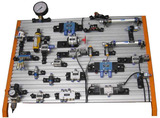
Electropneumatic control system compenent and basic control circuit
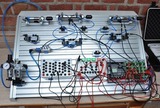
The electro-pneumatic action is a control system by the mean of air pressure for pipe organs, whereby air pressure, controlled by an electric current and operated by the keys of an organ console, opens and closes valves within wind chests, allowing the pipes to speak.
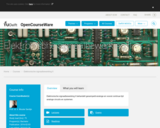
Na het behalen van dit vak kan de student:
filter-overdrachtsfuncties middels state-space synthese afbeelden op filter-topologieen, deze optimaliseren m.b.t. dynamisch bereik en gevoeligheid voor componenten-variaties en realiseren met behulp van integratoren;
circuits voor integratoren, analoge filters, continue-tijd filters, en nullors (operationele versterkers) ontwerpen en effecten ten gevolge van niet-ideale componenten en aliasing analyseren
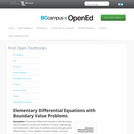
Elementary Differential Equations with Boundary Value Problems is written for students in science, engineering, and mathematics who have completed calculus through partial differentiation. If your syllabus includes Chapter 10 (Linear Systems of Differential Equations), your students should have some preparation in linear algebra. In writing this book I have been guided by the these principles: An elementary text should be written so the student can read it with comprehension without too much pain. I have tried to put myself in the student's place, and have chosen to err on the side of too much detail rather than not enough. An elementary text can't be better than its exercises. This text includes 2041 numbered exercises, many with several parts. They range in difficulty from routine to very challenging. An elementary text should be written in an informal but mathematically accurate way, illustrated by appropriate graphics. I have tried to formulate mathematical concepts succinctly in language that students can understand. I have minimized the number of explicitly stated theorems and defonitions, preferring to deal with concepts in a more conversational way, copiously illustrated by 299 completely worked out examples. Where appropriate, concepts and results are depicted in 188 figures

This is an advanced course on modeling, design, integration and best practices for use of machine elements such as bearings, springs, gears, cams and mechanisms. Modeling and analysis of these elements is based upon extensive application of physics, mathematics and core mechanical engineering principles (solid mechanics, fluid mechanics, manufacturing, estimation, computer simulation, etc.). These principles are reinforced via (1) hands-on laboratory experiences wherein students conduct experiments and disassemble machines and (2) a substantial design project wherein students model, design, fabricate and characterize a mechanical system that is relevant to a real world application. Students master the materials via problems sets that are directly related to, and coordinated with, the deliverables of their project. Student assessment is based upon mastery of the course materials and the student's ability to synthesize, model and fabricate a mechanical device subject to engineering constraints (e.g. cost and time/schedule).

This course provides an introduction to the fundamental principles and techniques of software development that have greatest impact on practice. Topics include capturing the essence of a problem by recognizing and inventing suitable abstractions; key paradigms, including state machines, functional programming, and object-oriented programming; use of design patterns to bridge gap between models and code; the role of interfaces and specification in achieving modularity and decoupling; reasoning about code using invariants; testing, test-case generation and coverage; and essentials of programming with objects, functions, and abstract types. The course includes exercises in modeling, design, implementation and reasoning.

A four time shuttle veteran with more than 1,000 hours in space, Ochoa is an inspirational figure in spaceflight.

This course is a computationally focused introduction to elliptic curves, with applications to number theory and cryptography. While this is an introductory course, we will (gently) work our way up to some fairly advanced material, including an overview of the proof of Fermat's last theorem.

This is intended as an introduction to embedded controllers for students in Electrical Engineering and Technology at the AAS and/or BS level. It begins with a discussion of the C programming language and then shifts to using the open source Arduino hardware platform. Uses both the Arduino library and more direct coding of the controller.

This is the companion lab manual for the text "Embedded Controllers Using C and Arduino 2E". It introduces embedded controller systems using the Arduino hardware platform and the C programming language. It is intended for students in Electrical Engineering and Electrical Engineering Technology programs at the Associate and Baccalaureate levels. Clicking to view this item begins a .doc download.
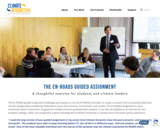
The En-ROADS guided assignment challenges participants to use the free online En-ROADS simulator (https://en-roads.climateinteractive.org/) to create a scenario that successfully addresses climate change while considering implications across the economy, environment, and society. The En-ROADS assignment is used in classrooms, ranging from middle school to graduate level students, and comes in short and long forms. It can also be adapted as an exercise for non-academic settings. Often, the assignment is given following an En-ROADS workshop or Climate Action Simulation role-playing simulation game (https://www.climateinteractive.org/en-roads/).
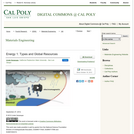
This video defines energy, reviews a model of different types of energy and presents the four known stable global energy resources. This video is part of the Sustainability Learning Suites, made possible in part by a grant from the National Science Foundation. See 'Learn more about this resource' for Learning Objectives and Activities.

This video takes an in-depth look at the annual energy available on earth against the amount of energy used by humans. It uses a graphic, published by Wes Hermann in the journal Energy, to makes clear the different energy fluxes. This video is part of the Sustainability Learning Suites, made possible in part by a grant from the National Science Foundation. See 'Learn more about this resource' for Learning Objectives and Activities.
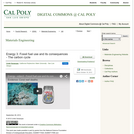
This video goes through the carbon cycle and describes how using fossil fuels threatens the foundation of the aquatic global food chain. This video is part of the Sustainability Learning Suites, made possible in part by a grant from the National Science Foundation. See 'Learn more about this resource' for Learning Objectives and Activities.
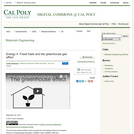
This video describes in detail the greenhouse effect and how recovery from energy from fossile fuels results in green house gases. This video is part of the Sustainability Learning Suites, made possible in part by a grant from the National Science Foundation. See 'Learn more about this resource' for Learning Objectives and Activities.
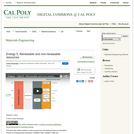
This video distinguishes between renewable and non-renewable energy resources. It examines the question, "How long to do we have before we exhaust non-renewable resources?" It also looks at alternatives to non-renewable energy resources. This video is part of the Sustainability Learning Suites, made possible in part by a grant from the National Science Foundation. See 'Learn more about this resource' for Learning Objectives and Activities.
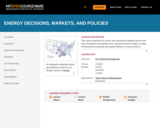
This course examines the choices and constraints regarding sources and uses of energy by households, firms, and governments through a number of frameworks to describe and explain behavior at various levels of aggregation. Examples include a wide range of countries, scope, settings, and analytical approaches. This course is one of many OCW Energy Courses, and it is a core subject in MIT’s underGraduate / Professional Energy Studies Minor. This Institute-wide program complements the deep expertise obtained in any major with a broad understanding of the interlinked realms of science, technology, and social sciences as they relate to energy and associated environmental challenges.
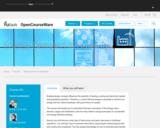
Building design strongly influences the quantity of heating, cooling and electricity needed during building operation. Therefore, a correct thermal design is essential to achieve low energy and low carbon buildings, with good indoor air quality.
This course will enable you to understand the basic principles of the energy chain: demand, supply and distribution; and how they relate to design principles for sustainable and energy-efficient buildings.
Second, you will discover what type of heat losses and gains take place in buildings’ operations. You will learn how to estimate these flows using simple meteorological data and construction properties. You will acquire knowledge on how to estimate heat transfer through construction, ventilation, solar radiation or caused by internal sources or heat storage in the construction.
Third, you will learn to make estimates of buildings’ energy needs on an hourly basis by using simple static energy balances: how much energy comes in and out and which air temperature is needed? When is there heating or cooling? How much electricity is needed?
Fourth, you will discover how to extend your estimates to yearly energy demand, which is essential to make sure that a building is energy efficient and to estimate energy savings and energy costs. You will then also be able to determine the size of the needed heating and cooling equipment (which determines the costs of equipment).
Finally, you will learn how to optimize building design and will be able to find out the optimal window size or the optimum insulation thickness for your building. You will know why putting windows on the south façade is not always energy-efficient. You will understand the thermal interactions between building components and be able to make informed decisions on how to increase the energy efficiency of new and existing buildings.
This course is part of the PCP Buildings as Sustainable Energy Systems. In the other courses in this program you can learn how to choose low carbon energy supply, how to create a comfortable indoor environment, and how to control and optimize HVAC systems.
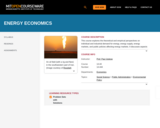
This course explores the theoretical and empirical perspectives on individual and industrial demand for energy, energy supply, energy markets, and public policies affecting energy markets. It discusses aspects of the oil, natural gas, electricity, and nuclear power sectors and examines energy tax, price regulation, deregulation, energy efficiency and policies for controlling emission.
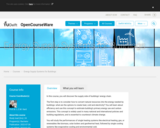
In this course, you will discover the supply side of buildings’ energy chain.
The first step is to consider how to convert natural resources into the energy needed by buildings: what are the options to create heat, cold and electricity? You will learn about efficiency and use this concept to estimate building’s primary energy use and carbon emissions. This concept is widely used in many national and international policies and building regulations, and is essential to counteract climate change.
You will study the performances of single heating systems like electrical heating, gas, or renewables like biomass, solar boilers and geothermal heat, followed by single cooling systems like evaporative cooling and environmental cold.
We will also examine the systems that concurrently produce heat and cold. Do you know for instance that a heat pump and a cooling machine are identical devices? You will learn about the basic working principles of heat pumps and how to make sure they achieve high performance levels. After this course you will know how an Aquifer Thermal Storage makes smart use of the ground to deliver cold in summer and heat in winter.
Diverse electricity generation methods using turbines (wind, hydro), photovoltaics or hydrogen fuel cells will also be examined. You will learn how cogeneration of heat and power works and why this is important for the rational use of energy resources. You will also know why heat pumps are often combined with boilers or to which extent it is worth to invest in batteries for your solar panels.
By the end of the course you will be able to decide on how to combine energy conversion systems at building level in order to match buildings’ energy demand while keeping costs acceptable, using a minimum of natural resources and producing a minimum of carbon emissions.
This course is part of the program Buildings as Sustainable Energy Systems. In the other courses in this program you can learn how to design buildings with low energy demand, how to create a comfortable indoor environment, and how to control and optimize HVAC systems.

This course provides students with an opportunity to conceive, design and implement a product, using rapid prototyping methods and computer-aid tools. The first of two phases challenges each student team to meet a set of design requirements and constraints for a structural component. A course of iteration, fabrication, and validation completes this manual design cycle. During the second phase, each team conducts design optimization using structural analysis software, with their phase one prototype as a baseline.
Acknowledgements
This course is made possible thanks to a grant by the alumni sponsored Teaching and Education Enhancement Program (Class of '51 Fund for Excellence in Education, Class of '55 Fund for Excellence in Teaching, Class of '72 Fund for Educational Innovation). The instructors gratefully acknowledge the financial support.
The course was approved by the Undergraduate Committee of the MIT Department of Aeronautics and Astronautics in 2003. The instructors thank Prof. Manuel Martinez-Sanchez and the committee members for their support and suggestions.

This course provides students with an opportunity to conceive, design and implement a product, using rapid prototyping methods and computer-aid tools. The first of two phases challenges each student team to meet a set of design requirements and constraints for a structural component. A course of iteration, fabrication, and validation completes this manual design cycle. During the second phase, each team conducts design optimization using structural analysis software, with their phase one prototype as a baseline.
Acknowledgements
This course is made possible thanks to a grant by the alumni sponsored Teaching and Education Enhancement Program (Class of '51 Fund for Excellence in Education, Class of '55 Fund for Excellence in Teaching, Class of '72 Fund for Educational Innovation). The instructors gratefully acknowledge the financial support. The course was approved by the Undergraduate Committee of the MIT Department of Aeronautics and Astronautics in 2003. The instructors thank Prof. Manuel Martinez-Sanchez and the committee members for their support and suggestions.
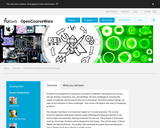
Products and equipment all around us are made of materials: look around you and you will see phones, computers, cars, and buildings. We face challenges in securing the supply of materials and the impact this has on the planet. Innovative product design can help us find solutions to these challenges. This course will explore new ways of designing products.
The design of products is an important aspect of a circular economy. The circular economy approach addresses material supply challenges by keeping materials in use much longer and eventually returning materials for new use. The principle is that waste must be minimized. Products will be designed to last longer. They will be easier to Reuse, Repair, and Remanufacture. The product will eventually be broken down and Recycled. This is Design for R and is the focus of this course.
Experts from leading European universities and research organizations will explain the latest strategies in product design. Current design approaches lead to waste, loss of value and loss of resources. You will learn about the innovative ways in which companies are creating value, whilst securing their supply chains, by integrating Design for R.
This course is suitable for all learners who have an interest in product design, innovative engineering, new business activity, entrepreneurship, sustainability, circular economy and everyone who thinks that the current way we do things today needs a radical rethink.

This course is an introduction to the dynamics and vibrations of lumped-parameter models of mechanical systems. Topics covered include kinematics, force-momentum formulation for systems of particles and rigid bodies in planar motion, work-energy concepts, virtual displacements and virtual work. Students will also become familiar with the following topics: Lagrange's equations for systems of particles and rigid bodies in planar motion, and linearization of equations of motion. After this course, students will be able to evaluate free and forced vibration of linear multi-degree of freedom models of mechanical systems and matrix eigenvalue problems.

A Canadian Text
Word Count: 68423
(Note: This resource's metadata has been created automatically by reformatting and/or combining the information that the author initially provided as part of a bulk import process.)

Engineering: Electrical Fundamentals Syllabus
Engineering 202: Electrical Fundamentals II
Course Description: Topics covered in this course include: AC and 2nd order transient analysis,
sinusoids and phasors, sinusoidal steady-state analysis, nodal analysis, branch analysis, source
transformations, Thevenin's and Norton's equivalent circuits, sinusoidal steady-state power calculation,
and balanced three-phase circuits.
Course Outcomes
Upon successful completion of this course, students will be able to:
1. Be able to apply Kirchoff's Laws to successfully analyze an AC circuit with both independent and
dependent sources. Be able to check your results for self-consistency.
2. Be able to apply Node-Voltage and Mesh-Current techniques to successfully analyze an AC
circuit with both independent and dependent sources. Op amp and equivalent circuits are a
natural extension of this understanding.
3. Be able to use appropriate tools to describe power use in an AC circuit and distinguish between
real and reactive power.
4. Be able to determine line and phase currents and voltages for any balanced configuration of 3
phase power.
5. Be able to predict the frequency dependent behavior of simple filter through the use of Bode
plots. Demonstrate an understanding of the implications of the Bode plot for the actual behavior
of the circuit
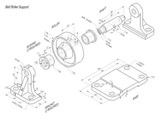
This course is just an introduction into knowing Mechanical Assembly Drawings.

Learn to produce great designs, be a more effective engineer, and communicate with high emotional and intellectual impact. This project based course gives students the ability to understand, contextualize, and analyze engineering designs and systems. By learning and applying design thinking, students will more effectively solve problems in any domain. Lectures focus on teaching a tested, iterative design process as well as techniques to sharpen creative analysis. Guest lectures from all disciplines illustrate different approaches to design thinking. This course develops students' skills to conceive, organize, lead, implement, and evaluate successful projects in any engineering discipline. Additionally, students learn how to give compelling in-person presentations. Open to all majors, all years.

This course covers: Fundamental concepts; fluid statics; fluid dynamics; Bernoulli's equation; control-volume analysis; basic flow equations of conservation of mass, momentum, and energy; differential analysis; potential flow; viscous incompressible flow.

This course is about the mathematics that is most widely used in the mechanical engineering core subjects: An introduction to linear algebra and ordinary differential equations (ODEs), including general numerical approaches to solving systems of equations.
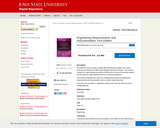
This e-book is intended to be used as a complementary resource for engineering measurements and instrumentation courses, at a junior engineering level.
If you have any comments or suggestions, please reach out to the author via email: reza@iastate.edu

This subject provides an introduction to the mechanics of materials and structures. You will be introduced to and become familiar with all relevant physical properties and fundamental laws governing the behavior of materials and structures and you will learn how to solve a variety of problems of interest to civil and environmental engineers. While there will be a chance for you to put your mathematical skills obtained in 18.01, 18.02, and eventually 18.03 to use in this subject, the emphasis is on the physical understanding of why a material or structure behaves the way it does in the engineering design of materials and structures.

This subject provides an introduction to fluid mechanics. Students are introduced to and become familiar with all relevant physical properties and fundamental laws governing the behavior of fluids and learn how to solve a variety of problems of interest to civil and environmental engineers. While there is a chance to put skills from calculus and differential equations to use in this subject, the emphasis is on physical understanding of why a fluid behaves the way it does. The aim is to make the students think as a fluid. In addition to relating a working knowledge of fluid mechanics, the subject prepares students for higher-level subjects in fluid dynamics.

Word Count: 5581
Included H5P activities: 31
(Note: This resource's metadata has been created automatically by reformatting and/or combining the information that the author initially provided as part of a bulk import process.)
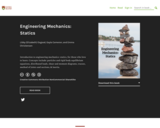
Introduction to engineering mechanics: statics, for those who love to learn. Concepts include: particles and rigid body equilibrium equations, distributed loads, shear and moment diagrams, trusses, method of joints and sections, & inertia.
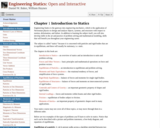
Engineering Statics is a free, open-source textbook appropriate for anyone who wishes to learn more about vectors, forces, moments, static equilibrium, and the properties of shapes. Specifically, it has been written to be the textbook for Engineering Mechanics: Statics, the first course in the Engineering Mechanics series offered in most university-level engineering programs.
This book’s content should prepare you for subsequent classes covering Engineering Mechanics: Dynamics and Mechanics of Materials. At its core, Engineering Statics provides the tools to solve static equilibrium problems for rigid bodies. The additional topics of resolving internal loads in rigid bodies and computing area moments of inertia are also included as stepping stones for later courses. We have endeavored to write in an approachable style and provide many questions, examples, and interactives for you to engage with and learn from.
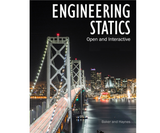
A free and open source textbook for a traditional, one-semester, engineering mechanics (statics) course.
Topics include forces and moments; equilibrium of particles, rigid bodies, and structures; centroids and moments of inertia. The text contains interactive diagrams illustrating important concepts. A pdf version is at https://engineeringstatics.org/pdf/statics.pdf

Lagrangian and Bond Graph Methods
Short Description:
This open education resource presents effective system modelling methods, including Lagrangian and bond graph, and the application of a relevant engineering software tool, 20-sim. The content is designed for engineering students and professionals in the field to support their understanding and application of these methods for modelling, simulation, and design of engineering systems. The text also includes videos showing selected worked-out examples.
Long Description:
This textbook emphasizes the fundamentals of modelling methods—including Lagrangian and bond graph—and introduces a software tool for modelling and simulation to support the design of common engineering systems. This approach minimizes the time-consuming effort of manipulating and extracting system equations and writing computer code for integrating and finding their solution. We believe that our approach helps both students and professionals currently working in the field to become more productive engineers. Videos of selected worked-out examples help the reader understand the topic and applications for real-world engineering systems. This book comprises of 11 chapters.
Word Count: 41611
ISBN: 978-1-990132-09-4
(Note: This resource's metadata has been created automatically by reformatting and/or combining the information that the author initially provided as part of a bulk import process.)
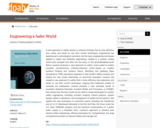
A new approach to safety, based on systems thinking, that is more effective, less costly, and easier to use than current techniques. Engineering has experienced a technological revolution, but the basic engineering techniques applied in safety and reliability engineering, created in a simpler, analog world, have changed very little over the years. In this groundbreaking book, Nancy Leveson proposes a new approach to safety—more suited to today's complex, sociotechnical, software-intensive world—based on modern systems thinking and systems theory. Revisiting and updating ideas pioneered by 1950s aerospace engineers in their System Safety concept, and testing her new model extensively on real-world examples, Leveson has created a new approach to safety that is more effective, less expensive, and easier to use than current techniques. Arguing that traditional models of causality are inadequate, Leveson presents a new, extended model of causation (Systems-Theoretic Accident Model and Processes, or STAMP), then shows how the new model can be used to create techniques for system safety engineering, including accident analysis, hazard analysis, system design, safety in operations, and management of safety-critical systems. She applies the new techniques to real-world events including the friendly-fire loss of a U.S. Blackhawk helicopter in the first Gulf War; the Vioxx recall; the U.S. Navy SUBSAFE program; and the bacterial contamination of a public water supply in a Canadian town. Leveson's approach is relevant even beyond safety engineering, offering techniques for “reengineering” any large sociotechnical system to improve safety and manage risk.